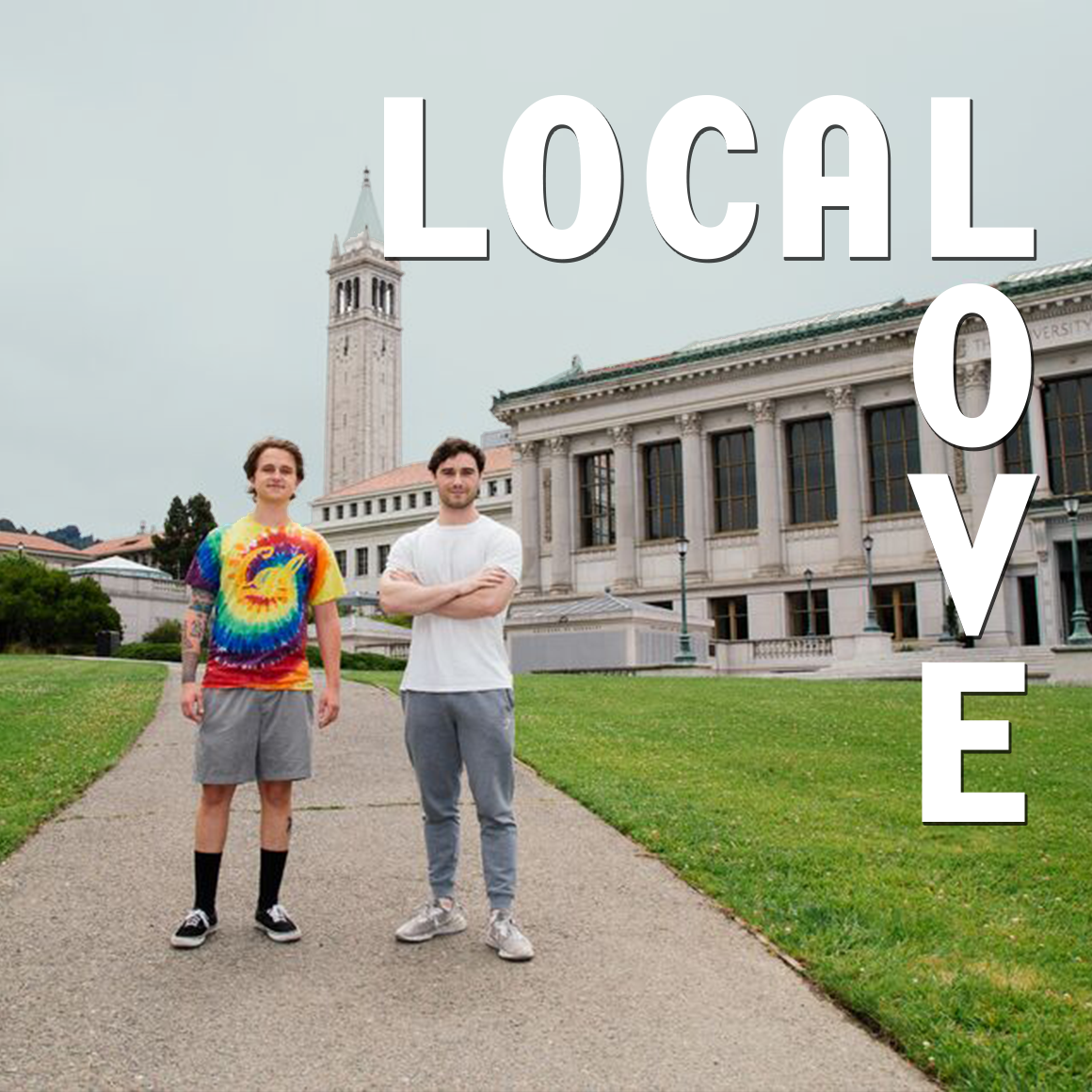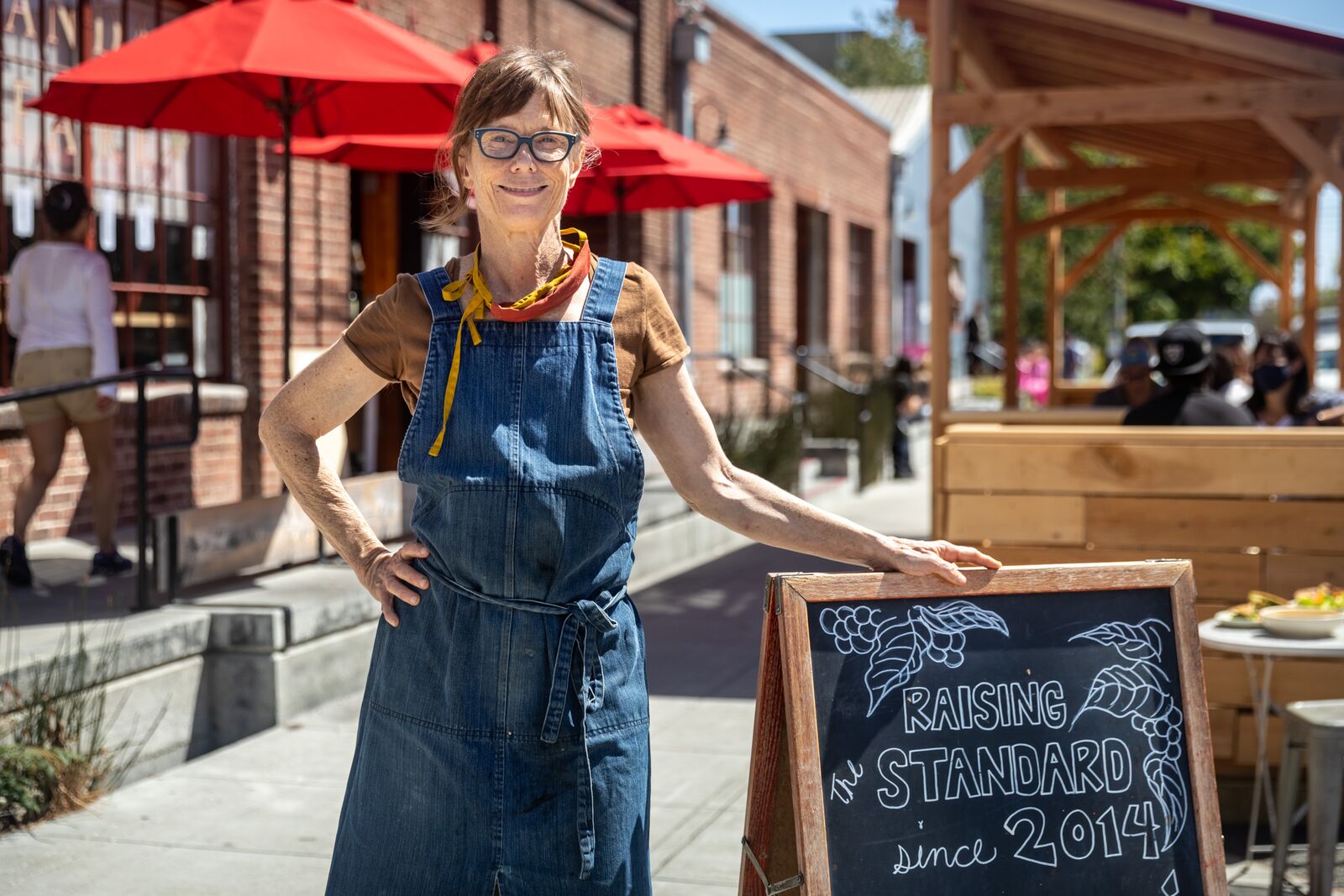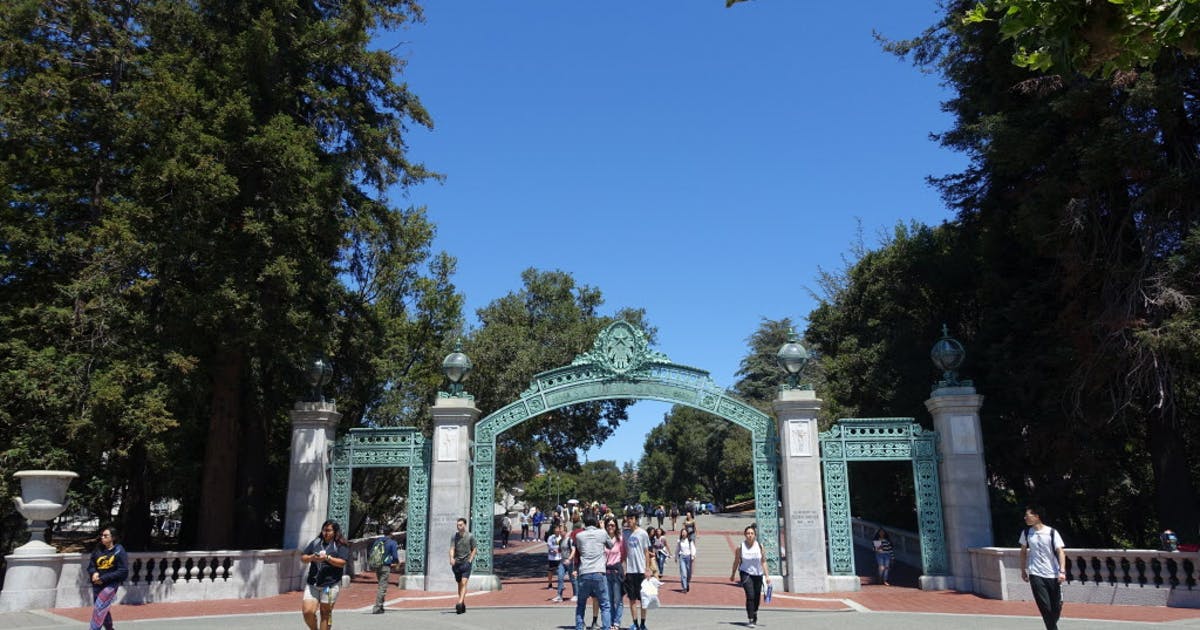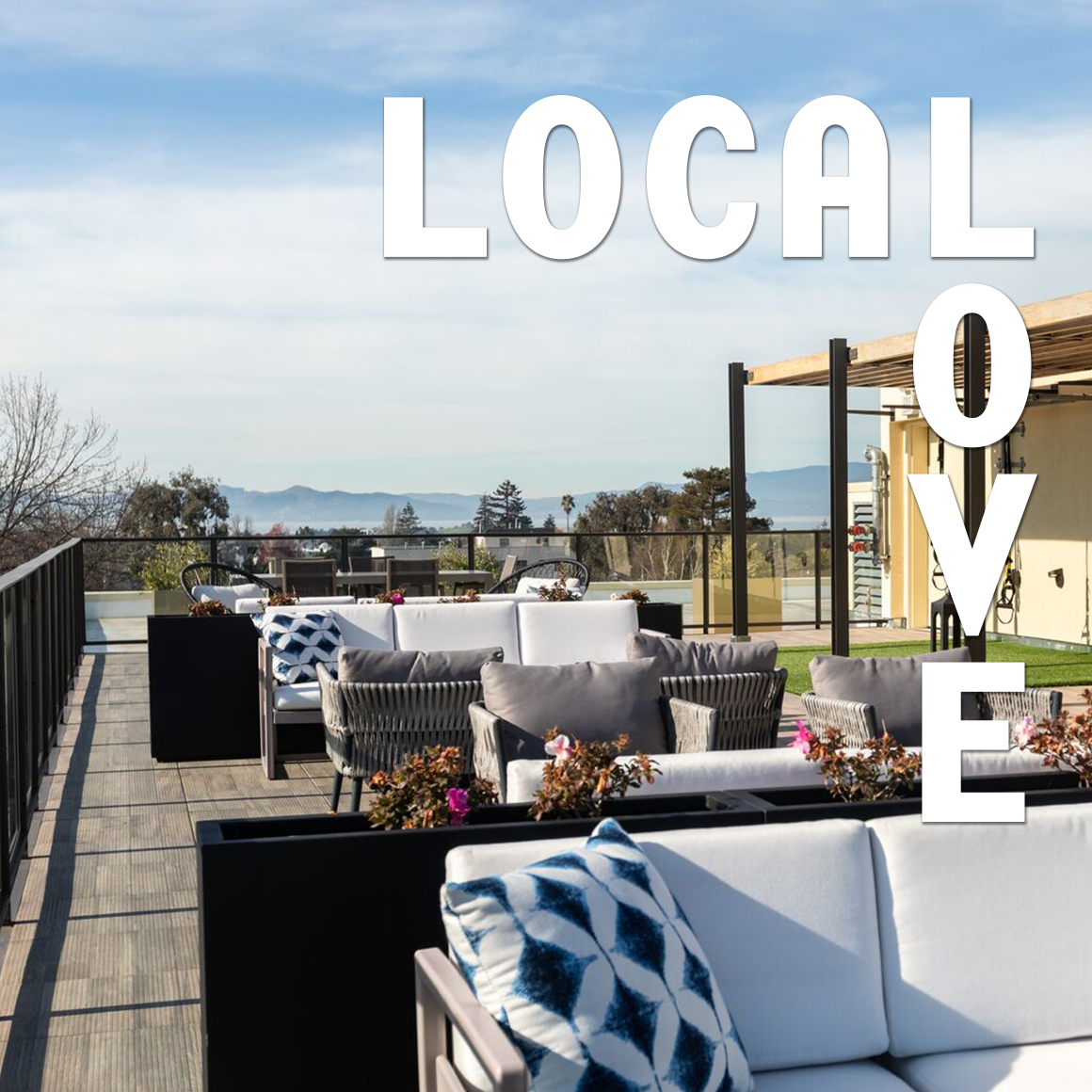The artisan gelato business with shops in Berkeley and Pleasanton can now sell more of its products in the Bay Area.
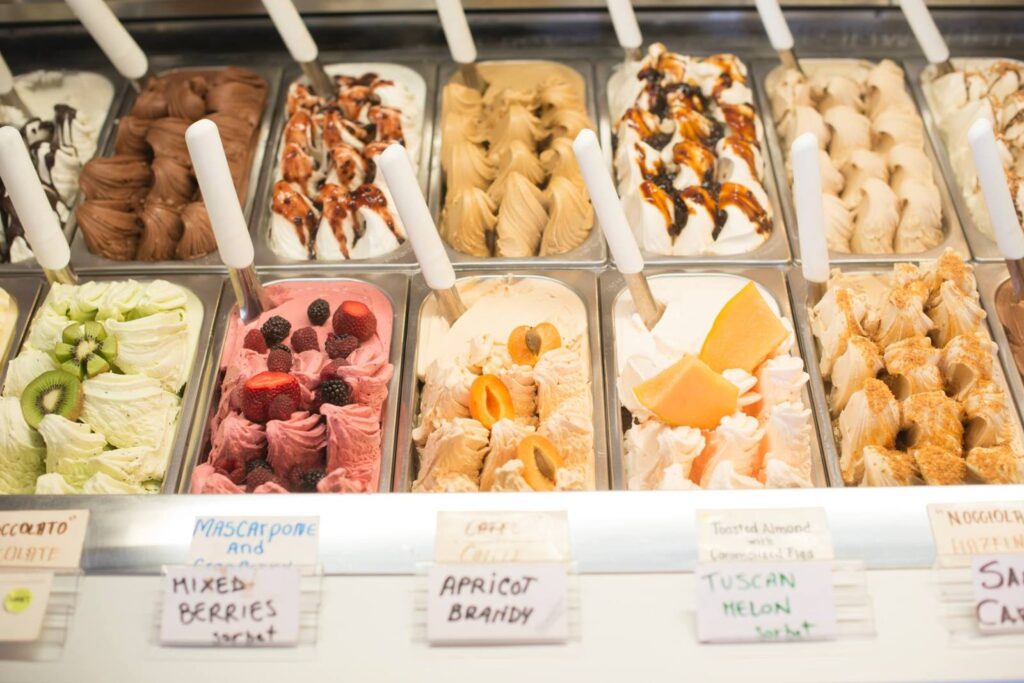
July 1, 2024
THE OAKLANDSIDE — Simone Arpaio is standing in a 2,500-square-foot Richmond warehouse and imagining the future.
“Freezers and freezers and freezers and freezers and freezers. A lot of freezers. This whole wall is going to be freezers.”
Freezers might not be the star of many people’s dreams, but for Arpaio, co-owner of Almare Gelato Italiano, they’re the answer to a longstanding problem.
Almare Gelato in Berkeley was designed to be a small operation when it opened in 2008, serving downtown’s dinner crowd and enticing passengers as they came up the escalator from BART. But within a few years, the company’s wholesale business was taking off and more restaurants and catering companies were ordering their Italian dessert. Almare prides itself in making gelato from scratch every morning, with signature flavors like toasted almond and caramelized fig.
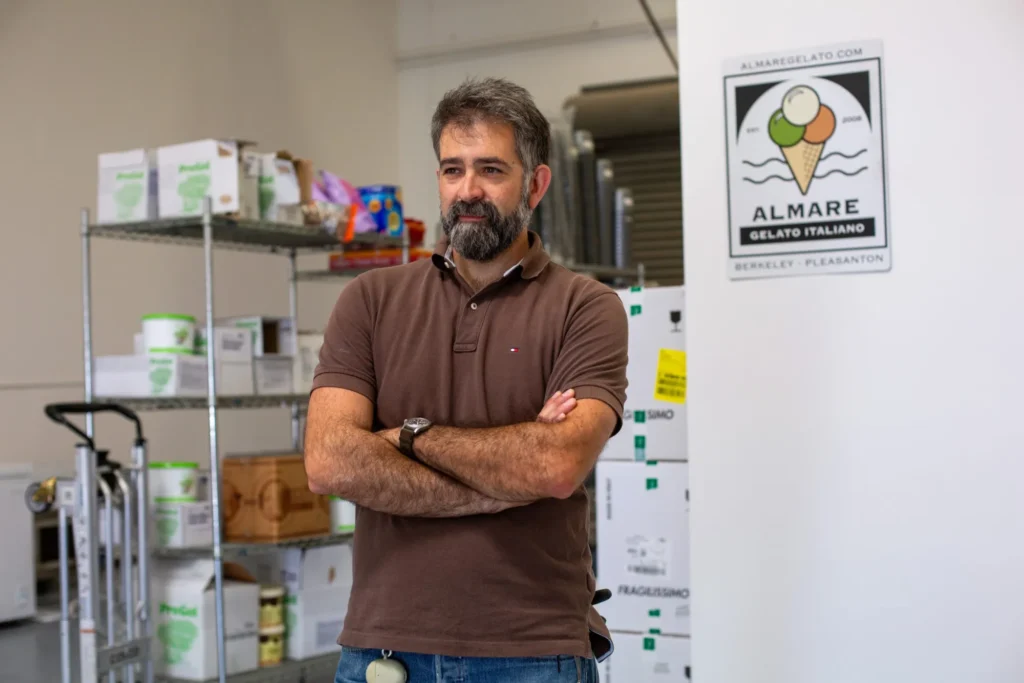
But the company was running out of options for places to put their freezers at the Berkeley store.
“At one point, we had to put a freezer in the mezzanine, like the attic essentially,” said Arpaio. “It was extremely uncomfortable.”
Almare Gelato knew for years it was time to expand and move into a warehouse to manufacture gelato. Finally, last year it landed the sweet spot — a site for a manufacturing facility in Richmond, by Bayview Avenue and I-580. After months of renovating the space, the company began making gelato there in late April.
“The idea is to bring artisan gelato all around the Bay Area,” Arpaio said. “It must be made fresh, like bread.”
Two Italian food lovers enter the U.S. gelato business
Almare Gelato is run by Arpaio, who studied biology before entering the gelato business, and the company’s founder, Alberto Malvestio, who studied mechanical engineering. Both men are from Italy and they both love food. Malvestio’s great uncle was also a gelato maker in Italy, and his recipe is at the heart of Almare’s product today.
When you study English in Italy, instructors teach that the translation of “gelato” is “ice cream” in English, Arpaio said. But when both men arrived in the United States, they learned gelato and ice cream are very different.
Gelato contains more milk and less cream than ice cream, and has less fat. It also has a higher density than ice cream, which can give it a more intense flavor.
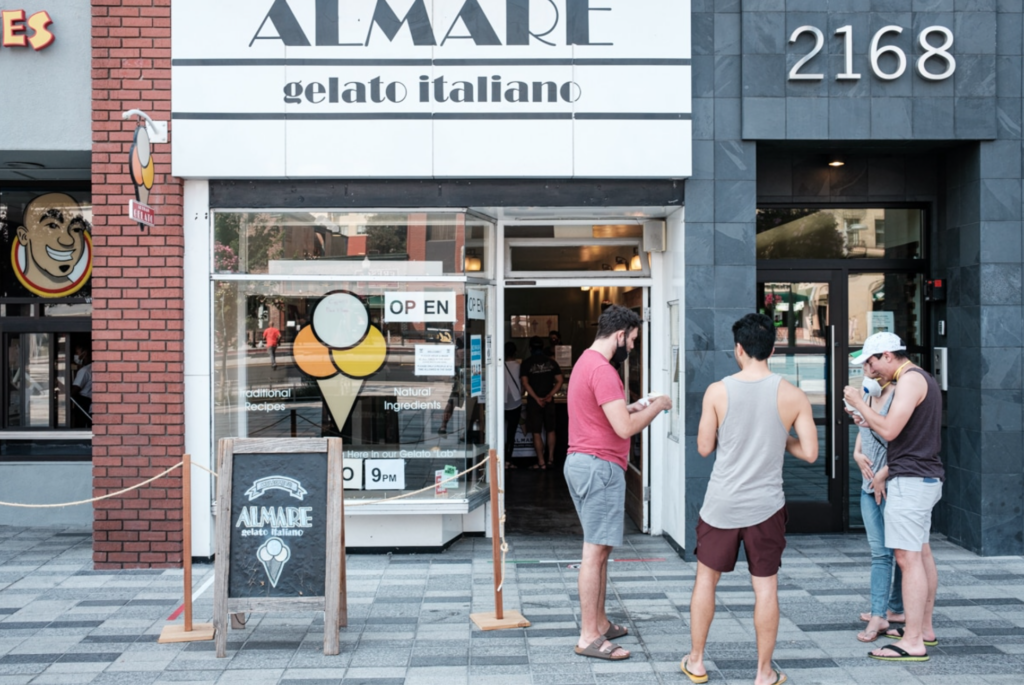
In Italy people are as passionate about food as Midwesterners are about sports, Arpaio said. But that means the food industry can also feel intimidating, and many prepare to enter the field before they’re teenagers. But Arpaio found a way to enter the food business outside Italy. He moved to the United States after visiting the Bay Area while on vacation in 2010.
“When I came here, I didn’t know what to do. But I knew that I wanted to work in food,” he said. “You have a chance to go to a place where you don’t know anybody and do something you love. So you try.”
Soon Arpaio met Malvestio, who was looking for a business partner. They hit it off, and Arpaio joined him in running the company.
“This is a business that you do because you’re happy to go to work on a Monday,” Arpaio said. “It’s kind of like a happiness business.”
Growing too fast for comfort
When Arpaio came on board, he said Almare Gelato had only a few wholesale clients. He started marketing their product to places around the Bay Area, and before long they were at capacity.
Deemed an essential business, Almare Gelato stayed open during the pandemic. But, finding the right location for a manufacturing warehouse became more complicated. Everything was nebulous and unclear.
“Even if we found places, they said, ‘Yes’, then they said, ‘No.’ Then they said, they don’t know,” Arpaio said.
They stayed patient and kept searching and, in 2023, Almare Gelato signed a lease for the Richmond warehouse.
The site is convenient for distributing gelato. It’s close to two highways, making it easy to travel from the warehouse to the North Bay, the East Bay and San Francisco.
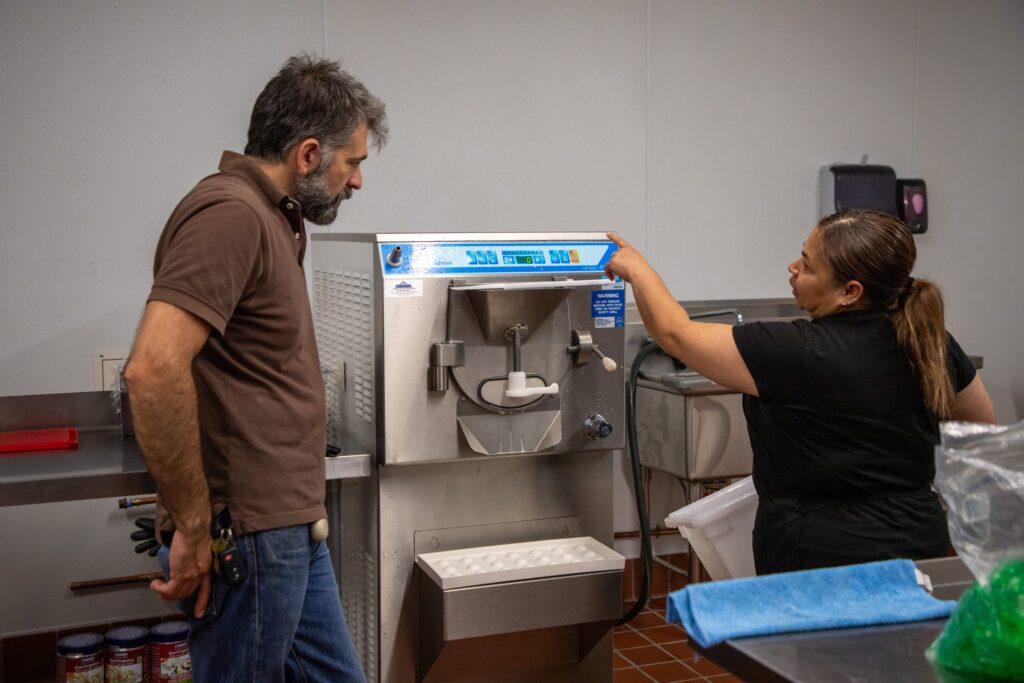
The spacious facility sits in a neighborhood near propane and electrical supply businesses, as well as a mid-century modern furniture museum. The warehouse, once used to repair boats, was an empty shell when Arpaio found it. They put in a new floor, a new ceiling and new walls. They remodeled the restroom and built a “clean room” — like a kitchen designed specifically for frozen desserts that looks like a big box from the outside.
The site is not open to the public, and the main attraction is the refrigerator-sized Italian Carpigiani machine that can make two batches, about 2.5 gallons of gelato, in just ten minutes.
“It kind of works like a refrigerated washing machine,” Arpaio explains. “The mix is poured into the machine. Because the blades rotate, it allows for the mix to be slightly whipped and frozen at the same time.”
The artisan, hands-on approach is key to the company’s success. At the new facility, Catalina De Santiago operates the machine and mixes in ingredients when needed. As a skilled gelato-maker of nearly a decade, she carefully prepares batches of gelato to start the week.
“It’s so delicious,” De Santiago said.
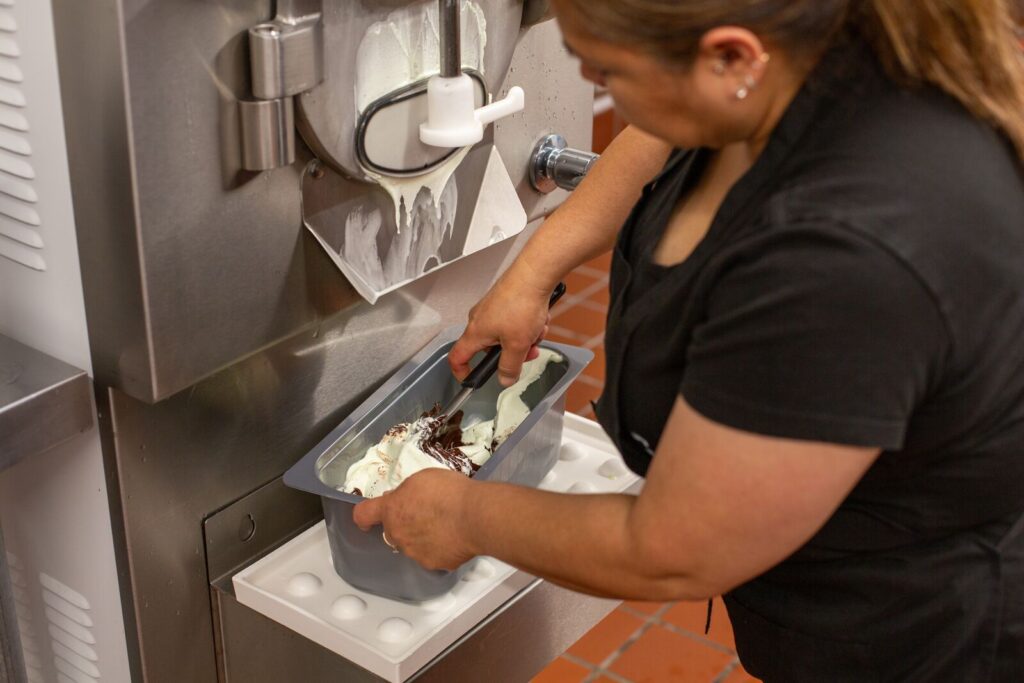
Staying true to the vision
Down to the shade of green, Arpaio only wants to make gelato he can be proud of. Arpaio points out their fresh mint, describing it as “kind of a big deal.” They spent a lot of time researching mint syrup with no artificial colorants.
“So you see that the mint is not like alien green. It’s a very mild green,” Arpaio said.
Working more with restaurants has also given Almare Gelato the chance to try out flavors they might not think of, like a flavor in the works, gelato based on gulab jamun, an Indian dessert.
Personally, though, Arpaio is not a big fan of the birthday cake flavor movie theaters have asked for.
“It’s blue. We make all our flavors from scratch, but some flavors we cannot make from scratch, like birthday cake,” he said. “You know, in a movie theater, kids want to eat colors. So that’s what they get.”
Arpaio said he could use lower quality ingredients, expand, set up a national chain, and “become super rich.” But that’s not his style, and he thinks customers in the Bay Area can tell the good gelato from the bad.
The Richmond space is unlikely to be a retail shop in the near future — got to save space for all those freezers.
Gelato is the happiness business, as Arpaio sees it, and the ingredients for happiness need to go somewhere.
And he’s glad he found just the place in Richmond.

